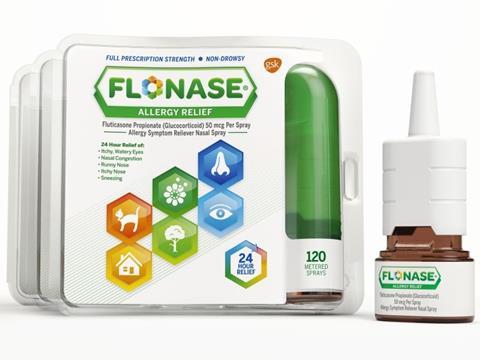
GSK shares behind the scenes of a major project with Packaging Europe, the largest venture in GSK CH for 2014-15 which saw a switch from Rx to Cx for the nasal spray product Flonase.
Sriman Banerjee Head of Packaging Development - Respiratory Category at GSK Consumer Healthcare, talks Libby White through how GSK met the demands on a complex journey of developing over-the-counter packaging, and successfully implemented the project, commendably winning two esteemed awards for their efforts.
Sriman introduces the main challenges. “This project posed many complexities, and you need to be able to demonstrate many factors to the regulatory bodies such as the safety and efficacy of the product, and to meet the requirements of consumer usage.
Having said that, we achieved a successful demonstration of a switch from Rx to Cx with OTC packaging. It’s a great example of how packaging can enable this move, as well as create differentiation on the retail shelf.”
Key challenges
It was critical to this project for the packaging to be optimised in order to provide the best value to consumer.
Consumer insights are also a vital factor to consider. Within the Rx market, healthcare products are prescribed through a doctor or pharmacist. However in Cx, the packaging needs to enable the consumer to make a judgement either in the retail store or for example media channels to choose the product.
The regulatory bodies are looking for key factors for them to approve the switch. The Human Factor Test, for example, needs to significantly demonstrate that the consumer can read the label and administer the product themselves. “We were able to address this challenge through the design and brilliant graphics of the pack,” explains Sriman.
He continues, “We also needed to take into consideration the effects of the large increase in volume of the production of the product. We needed to ensure we could maintain the quality of the product, and were able to demonstrate through continuous sampling inspection plan on spray testing.”
Packaging development
The volume of Flonase grew significantly for the Cx market. This large increase meant there were many aspects that needed to be taken into consideration with the development of its packaging.
Nasal products are usually classified as devices, and the packaging itself in this case is a device rather than an individual primary pack. Flonase is enabled through a meter dose spray pump, which comes with a glass bottle.
Mr Banerjee explains the reasons behind the packaging choices. “The primary pack consist of a glass bottle, metered dose pump and a overcap, the glass bottles provides UV and moisture barrier, the metered dose spray provides the right dose of product taking into consideration droplet size, spray pattern, shot weight and plume geometry and the overcap provides the enclosure to the pump.”
Highlights from this project was a change from type I to type III glass bottle. He continues, “This optimised the increase in production of the bottle and lowered risks within supply chain and production as type one is only produced twice a year.”
Typically, cartons are used within the OTC space. “The uniqueness we bring to Flonase is the clamshell secondary packaging, which allows the product to be displayed to the consumer,” Sriman is proud to point out. “From our consumer insights we discovered that when consumers are not able to see the product inside a carton, they may be taken by surprise with the product, as it is not what they anticipated at the point of purchase.”
The sinusoidal curved seal clamshell packaging allows Flonase to achieve shelf appeal and to allow for visibility of the product and clarity for the consumer.

Speed to market
The speed to market for this type of project is key says Sriman, “Regulatory bodies typically take 12 months to approve, and it’s essential you are prepared to launch the product once it has been permitted. Once GSK received approval the product appeared on the retail shelf within two months.”
It cleverly minimised trials with the use of a CT scan to test the cap. Mr Banerjee explains that they were able to reduce the weight of the overcap by 20 per cent, providing optimisation in terms of cost of production whilst also keeping key features unchanged to preserve performance.
To meet the huge increase in volume, GSK uses a fully automatic process, with two automatic lines set up using state-of-the-art robotics with 360-degree capabilities to produce the clamshell packaging. “This ensures consistency within the high capacity of the product. Roughly 60 packs are made per minute, high for a product of this nature,” comments Mr Banerjee.
An award-winning solution
Due to the success of the Flonase project, GSK won a prestigious North America AmeriStar by the IoPP, awarded for sustainable packaging in the drug and pharmaceutical companies category.
Project Flonase went on to win the Worldstar award for excellence in packaging, also in the drug and pharmaceutical category. “The pack is recyclable, and even the clamshell uses 50 per cent recycled PET. We are proud to win both of these awards.” sums up Mr Banerjee.
The judges recognised Flonase’s innovative clamshell pack, the clutter breaking structure and engaging brilliant graphics.

















